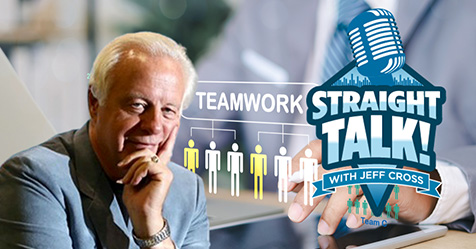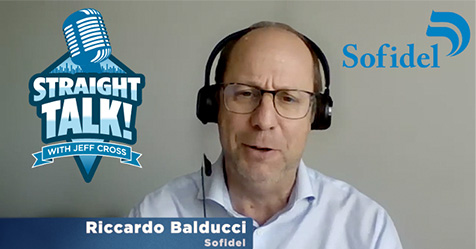Salespeople are getting older. Buyers are getting younger. You have a disconnect.
In raw terms, the average age of a professional B2B salesperson in the U.S. is 47 years old. Fifteen years ago, that number was 42. While the sales profession is graying, the average age of a B2B purchasing agent right now is 36 years old. In fact, according to a 2024 survey, Millennials (aged 29 to 44) make up to 73% of B2B buying decisions.
While an 11-year age gap doesn’t sound like much, it can be a chasm as wide as the Grand Canyon. Society underwent significant cultural and technological changes between the tail end of Generation X and the leading edge of the Millennial generation. Those changes greatly impact what Millennials want and expect from salespeople, as well as from the companies that employ them. Generation Z, which is coming behind the Millennials, have the same tendencies—just amplified. In this case, “younger buyers” refer primarily to Millennials and Z’s.
This doesn’t mean that you have to age-match; Gen Z and Millennials will certainly engage with and buy from more seasoned salespeople. What it does mean is that you have to style-match. In other words, you need to sell the way they want to buy. While this seems—and is— intuitive, it means that some salespeople acculturated to different methods of selling and different buyer expectations must adapt to stay relevant.
Here are three things that you must know about style-matching to sell to younger buyers:
1. Younger buyers flip the relationship-building script
The conventional way to build a relationship with a buyer was simple. You’d walk into the office, look around for family pictures, hobby pictures, college diplomas, or other clues to the buyer’s personal life, and then you’d start a conversation based upon those interests. This approach has become so hackneyed that it has a name: “Fish on the wall” selling. “Hey, you like to fish? I like to fish, too! Let’s talk about fishing and then I know you’re going to want to buy from me.”
It sounds a little disingenuous, because it is. Salespeople have been starting conversations about personal issues that they didn’t really care about. That’s because, for generations, you had to find the personal connection first, bond over it, and then you had earned the right to talk business. Younger buyers flip that script completely; they are business-first. They aren’t going to schedule an appointment to talk football for 30 minutes. Instead, you get the appointment by telling them how you can help them do their jobs better. Then, when you get in the door, you get to the point with great business-focused questions and show them that you can help them do business better. If you can solve their business needs, then they are open to lunch, drinks, golf, or personal conversations. For salespeople used to the old ways, this is a significant shift—but it’s one that you must make to succeed.
2. Younger buyers demand versatility in communication
“All these younger buyers want to do is text! They don’t want to have phone calls!” That’s a common complaint from older buyers. The solution? Get good at texting. Learn how to send a persuasive, grammatically correct (yep, that’s important) message in 240 characters or less. That’s hard for salespeople who are used to lengthy phone conversations or meetings, or for that matter, who write long emails. The good news is that tools are available to help you with this. Artificial intelligence apps like ChatGPT and Claude.ai are very good at distilling longer communications down to their essence, while retaining persuasive ability. You must be able to write good AI prompts and edit when necessary.
Texting isn’t the complete solution; however, younger buyers have a variety of preferred platforms, and what works well for one might not work well for another. Video conferencing ability is mandatory—and not just on one platform. Become conversant with Zoom, Teams, and Google Meet. And other tech is on the way. If your buyer says, “I want to talk on WhatsApp,” don’t be the salesperson who has to say, “What’s that?” Younger buyers respect adaptability, especially when it’s coupled with experience and expertise.
3. Younger buyers are social media savvy—you had better be, too
Buyers today have a variety of ways of learning about you and your company, and social media is one of their primary tools. If you leave a prospecting message for a younger buyer, be aware that there is roughly a one in three chance that the buyer will look you up on LinkedIn before that buyer thinks about calling you back. And if you don’t look legitimate on LinkedIn, you’re not going to get that call (or email or text). “Looking legitimate” is more than just having a profile on LinkedIn. You need a good professional head shot, “about me” verbiage, a complete professional history, and some activity (i.e. posting and engagement). Recommendations and a strong network are a definite plus. If you aren’t using LinkedIn as a professional tool, you won’t be taken seriously.
But LinkedIn isn’t enough. You also need to be aware of other ways buyers can research you. Do you know what your company’s Google reviews say? Your buyer probably will—and you’d better have explanations for recent bad reviews.
Here’s the exception to the “younger buyers” rule: Many older buyers are learning from, and copying, habits of younger buyers. That means that you can’t just stereotype by age—you must be versatile, smart, and adaptable to buyer needs, no matter what age they are.
If you don’t keep pace with changes in buyers, you’re just going to be the old guy yelling, “Get off my lawn!” And nobody buys from that guy anymore.




